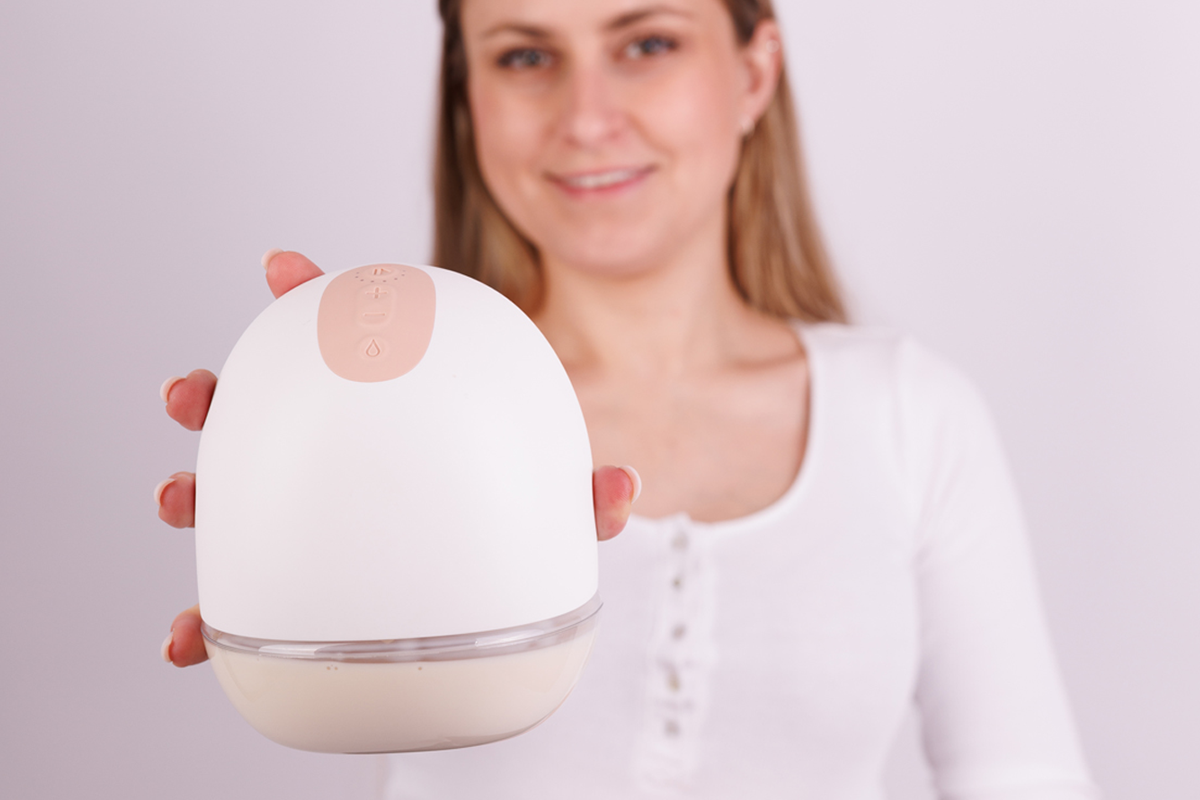Pumping breast milk is a powerful way to support your breastfeeding journey. But did you know that your posture can affect your comfort, milk flow, and supply? Leaning forward or sitting without back support can cause muscle fatigue and discomfort. By ensuring proper alignment, you can reduce soreness and improve your pumping sessions. Mastering your pumping posture makes all the difference, whether you're a new mom or a pumping pro.
Why your pumping position matters
Something as simple as how you sit during pumping can significantly influence your experience—even your long-term breast health. Here’s why your posture matters.
Comfort & pain prevention
Poor posture during pumping—like slouching or leaning forward—can lead to back, neck, and shoulder pain. Repetitive strain and tension from breastfeeding or pumping can result in chronic muscular issues. Stress, pain, or fatigue can inhibit oxytocin that triggers your let down.
💡 Adopting a comfortable pumping position with proper back and neck alignment helps to prevent unnecessary aches and fatigue.
Milk production & let-down
Relaxation correlates directly with effective milk let-down by increasing oxytocin blood level. Research confirms that stress and milk supply are closely linked, as stress and discomfort can delay or reduce milk flow, especially during pumping. Good breast pump positioning, supported by upright and relaxed posture, encourages optimal milk ejection reflex and can support supply over time.
Long-term health
Consistently poor posture can eventually contribute to musculoskeletal issues—like chronic lower back pain, shoulder misalignment, and even nerve compression. Proper sitting posture while pumping also helps maintain proper circulation and supports breast tissue health, especially when dealing with concerns like a clogged duct massage.
The ideal pumping posture
So, what does proper posture actually look like? Creating a comfortable environment supports both your mental and physical wellness during pumping. Here’s how to sit when pumping breast milk:
-
Back support: Sit in a firm, supportive chair with a straight back. Use cushions or a nursing pillow behind your lower back to maintain natural spine curvature.
-
Feet flat on the floor: Plant your feet flat or use a footrest to avoid tension in your lower back.
-
Relaxed shoulders: Keep shoulders low and relaxed. Avoid tensing up or holding your shoulders near your ears.
-
Neutral neck position: Look straight ahead—not down at your pump or bottles—to avoid neck strain. You can use a mirror, or simply trust the process once your setup is secured.
-
Arm and elbow support: Use armrests or well-placed pillows to keep your elbows from dangling. This helps avoid fatigue and encourages relaxed milk flow.
-
Hands-free pumping: Investing in a quality hands-free bra or wearable breast pump like the Perifit Pump allows you to control posture better, rather than being hunched over holding flanges.
Common pumping posture mistakes to avoid
Even seasoned pumping moms can fall into habits that cause pain or hinder milk flow. Here are some key mistakes to be mindful of:
Slouching
Slouching compresses your diaphragm and milk ducts, which may interfere with milk expression. It also increases strain on your lower back.
Hunching over the pump
It's common to want to "monitor" milk flow, but leaning forward compresses chest muscles and causes shoulder strain. Use a mirror or relax once your pump is secure.
Straining to see the bottles
Constantly craning your neck to check bottle levels can cause neck stiffness. Try setting a timer or trusting your usual milk output to avoid frequent checking.
Pumping in uncomfortable positions
Whether you're in the car, at work, or at night, pumping while twisted, lying back, or sitting on an unsupportive surface can lead to pain and reduced output. Try to keep your posture consistent and aligned, even in less-than-ideal settings.
💡 If your discomfort persists even when using ideal posture, it could be compounded by other factors like inadequate pump suction, incorrect settings, or repetitive stress. It’s important to consult a lactation professional if pain continues.
Tips for enhancing your pumping experience beyond posture
Posture is important—but it’s not the only key to a more effective and pleasant pumping session. Here are a few more worthwhile tips:
-
Hydration & nutrition: Drink plenty of water and maintain a balanced diet to keep milk production steady.
-
Relaxation techniques: Deep breathing, gentle music, or meditation apps can help trigger let-down naturally. You can get more milk watching videos of photos of your baby while pumping, this will boost your oxytocin blood level.
-
Hands-on pumping or breast massage: Light massage or compressions during pumping (especially helpful when treating a clogged duct) can increase breast milk output.
-
Appropriate flange size: Incorrect flange size causes pain and reduces efficiency. Refer to our flange sizing guide.
-
Limiting distractions: Use screen time wisely, or create a calming pumping corner to help minimize stress during sessions.
What kind of chair is best for pumping breast milk?
The best chair for pumping breast milk is one that provides:
-
Firm lower back support
-
Armrests aligned with your elbows in a relaxed position
-
A neutral, upright seat angle (avoid excessive recline)
-
Space for feet to rest flat on the floor or on a footrest
-
Soft cushions or nursing pillows to aid in adjustments
In a pinch, any sturdy dining chair can work if you add support with pillows. Rocking chairs or deep recliners, on the other hand, often tilt your pelvis backward, encouraging poor form and discomfort. Remember, pumping should not hurt—using the right chair helps maintain good posture and reduces pain during sessions.
If you're exclusively pumping multiple times daily, consider investing in a dedicated, ergonomic chair in your pumping space.
What is the best position for using the Perifit Pump?
Like most breast pumps, the Perifit Pump works best when you are upright or leaning forward very slightly. If you are using the milk volume detection feature, the app will warn you if you are not upright enough to get an accurate reading.
Supporting your body while pumping isn’t just about comfort—it’s about protecting your long-term health and sustaining milk production. Now that you know how to sit when pumping breast milk, small posture improvements can make a big difference in how you feel and how efficiently you pump. If you're struggling with low output, discomfort, or noticing one breast makes less milk, there are usually simple causes—and solutions. Don’t hesitate to reach out to a lactation consultant for personalized guidance on positioning, flange fit, and more.
Source:





